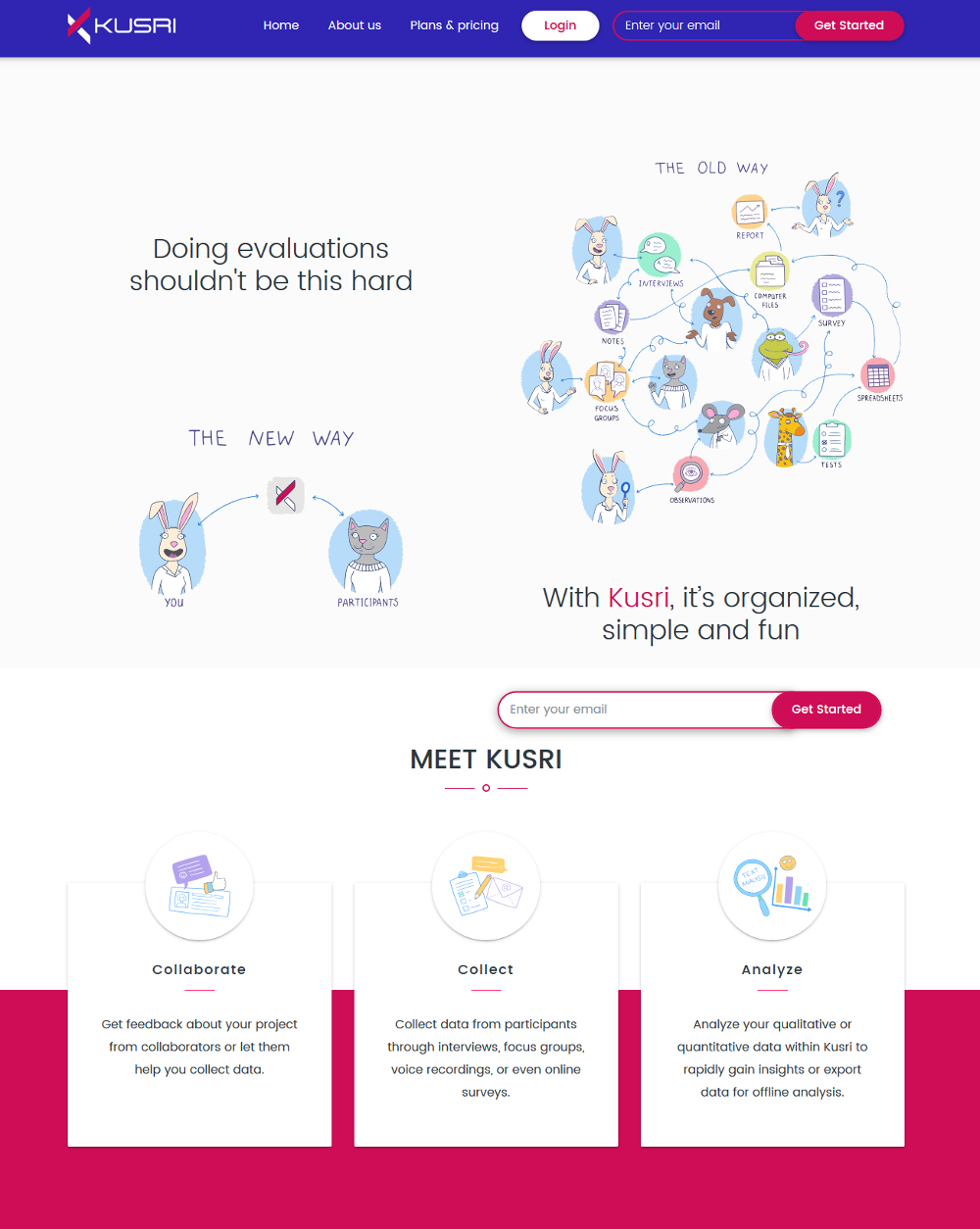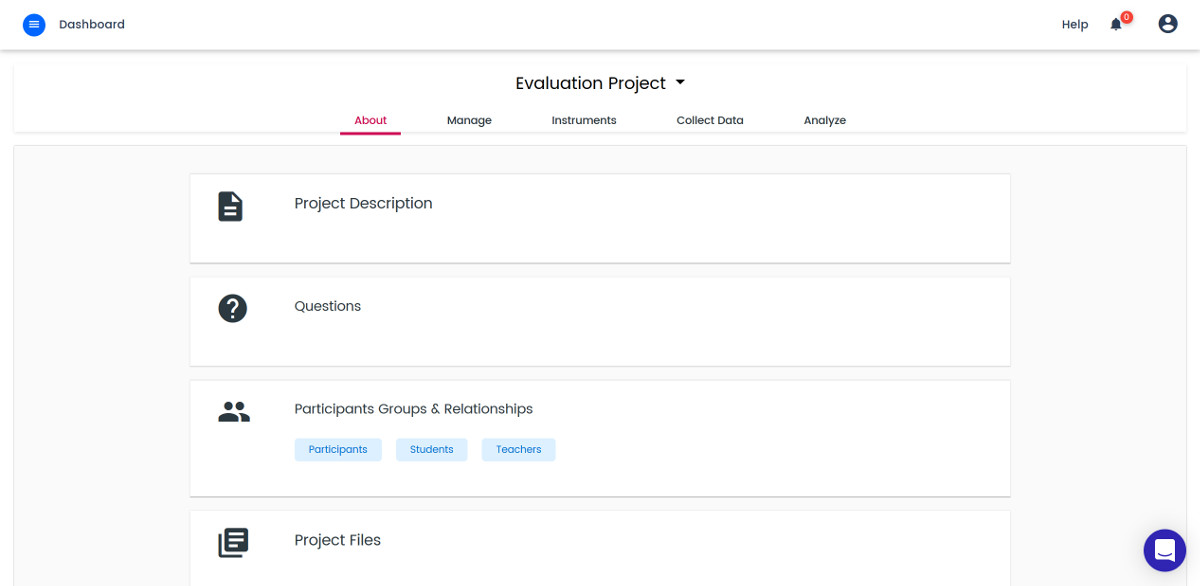Kusri.com - Evaluation platform
| At a Glance | |
|---|---|
| Domain | SaaS platform for evaluation professionals |
| Type | UX research (50%), UX design (50%) |
| Skills | UX audit, interviews, usability testing, wireframes, interactive prototype |
| Tools | Wireframe Pro, InVision, Visual Studio Online |
| Duration | 18 months |
Kusri.com is the 1st project where I owned the UX design process end-to-end, from research, design to tests and graphic supervision.

Target users:
Professional evaluators.
Business objectives
Kusri had released a beta version of their platform in 2016. While getting traction with a few customers, they also received a number of negative feedback and complaints. Kusri team had to step in regularly to help customers finalize their projects or make modifications. Such a high level of human involvement was not scalable.
Amanuel Medhanie, founder and CEO, contacted me in August 2017 to help them identify the shortcomings of the current platform, understand their customers’ needs and expectations in more details, in order to design an entirely new platform for Kusri.com.
User needs
Professional evaluators work on complex, long-term assessment projects. These projects typically use longitudinal studies over the course of one or several years, they involve multiple groups of related participants, they gather both quantitative and qualitative data from a variety of sources (surveys, interviews, focus groups, observation in addition to data that might be available in each context).
These professional evaluators have no easy way to gather and consolidate data from multiple surveys, compile and cross-reference them with interviews or external data. This results in hours wasted in merging and cleaning data sets, data of potentially low quality, or insights being lost due to the lack of a proper architecture.
Kusri.com aims to offer a unique platform that make it easier to manage complex data sets and to ensure that they are of the highest quality.
Process
- Initial research through competitive analysis and interviews of target users (both existing and prospective users)
- Design of a low-fidelity prototype
- Test with existing and prospective users
- Re-design and test of specific features (data collection)
- Supervision of graphic design from a UX perspective
- Communication with development and QA teams to ensure faithful implementation

Kusri v1
Key research insights
Initially, both independent evaluators and assessments professionals working in institutions (mostly in Education) were targeted. While their needs and expectations are mostly similar, the research still revealed some differences, so we decided to focus on professional evaluators at first.
Proper academic wording associated with statistics is not used by professionals in the field. We adapted the copy of the platform to actual practices.
The user flow in the first version of Kusri was too rigid and not adapted to real-life constraints. The research revealed the actual process and generic steps followed by professional evaluators, which informed the new information architecture.
New user needs and pain points were identified such as the difficulty to communicate their evaluation process to other stakeholders. New features were added, and more are planned to facilitate communication between all parties.
Usability testing revealed specific needs for data collectors, who are an essential part of the evaluation process, but are often overlooked. A data collector role already existed, but we streamlined the data collector flow to make it easier and quicker to enter data from participants.

Kusri v2
Lessons learned
Talking to users who had no previous experience and had not heard of Kusri before was the most valuable. Interviews of existing users also gave insightful data, but a few interviewees who had a demo not too long ago obviously repeated the sales pitch, rather than talking from their own experience and point of view.
Testing low-fidelity prototypes is a good way to identify issues early. Prototypes are by nature limited in functionalities, but they still need to offer some degree of freedom for the test to be meaningful: links other than those strictly necessary for the task have to be enabled. You also need to have a quick way to reset your prototype, when the user goes down an unforeseen path.
Providing the best user experience possible is a never-ending process. Kusri v2 has been released, and we’re listening to our users’ feedback to continue to improve Kusri. We’re here for the long run to work on UI improvements and new features and make life easier for our users.